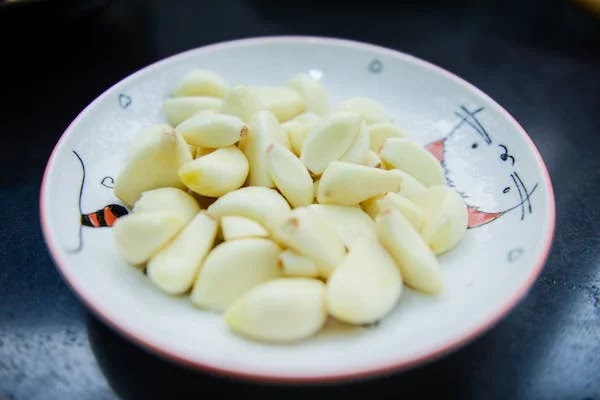Avian Influenza H5N1, often referred to as "bird flu," has been a significant concern for public health and global agriculture since it first emerged. This highly pathogenic virus primarily affects birds but has the potential to infect humans and other animals, causing severe illness and sometimes death. Understanding the transmission, symptoms, and control measures of Avian Influenza H5N1 is crucial for mitigating its impact and preventing future outbreaks. In this article, we will provide a comprehensive review of the H5N1 virus, its pathways of transmission, clinical signs, and the control strategies employed to combat its spread.
What is Avian Influenza H5N1?
Avian Influenza, caused by the H5N1 strain of the Influenza A virus, is a viral infection that primarily affects birds. However, certain strains, like H5N1, have been known to cross over to humans and other animals, posing a significant health threat. While outbreaks in poultry populations are common, human cases, though rarer, are often more severe and can lead to high mortality rates.
The H5N1 virus is classified as a zoonotic disease, meaning it can jump from animals to humans. It primarily spreads through direct contact with infected birds, their droppings, or contaminated environments. The virus can mutate rapidly, making it difficult to predict and control, which is why H5N1 remains a serious global health and agricultural concern.
Transmission of Avian Influenza H5N1
The transmission of H5N1 is primarily through contact with infected birds or their contaminated environment. The key transmission pathways include:
Direct Contact with Infected Birds: Poultry workers, veterinarians, and individuals in close proximity to infected birds are at high risk of contracting the virus. The virus can spread through contact with bird droppings, feathers, or bodily fluids.
Airborne Transmission: In areas where there is heavy contamination, such as poultry farms or live bird markets, the virus can be transmitted through the air. Respiratory droplets from infected birds can spread the virus over short distances.
Contaminated Equipment and Feed: The virus can be transmitted indirectly through contaminated equipment, feed, and water. This is a major risk in large-scale poultry operations where biosecurity measures are not strictly followed.
Migratory Birds: Wild birds, particularly waterfowl, are natural carriers of avian influenza viruses. These birds can migrate over long distances, potentially carrying the virus to new regions. While wild birds are often asymptomatic, they can still spread the virus to domestic poultry.
Human-to-Human Transmission: While rare, there have been documented cases of H5N1 virus transmission from person to person, primarily in family clusters where close contact with an infected individual occurred. The risk of sustained human-to-human transmission remains low, but it is a potential concern for pandemic preparedness.
Symptoms of Avian Influenza H5N1 in Humans and Birds
In Humans
The symptoms of H5N1 in humans can range from mild to severe, and they often appear suddenly. Early symptoms include:
- Fever
- Cough
- Sore throat
- Muscle aches
- Headache
- Conjunctivitis (eye infection)
As the infection progresses, severe symptoms may develop, including:
- Pneumonia
- Acute respiratory distress syndrome (ARDS)
- Organ failure
- Death, in severe cases
H5N1 infections in humans can lead to a high fatality rate, especially if not promptly diagnosed and treated. Early antiviral treatment is crucial for improving outcomes, though the virus is sometimes resistant to some antiviral medications.
In Birds
In birds, especially poultry, H5N1 can cause rapid and severe illness. Common symptoms in infected birds include:
- Sudden death (in many cases)
- Swelling of the head, neck, and eyes
- Diarrhea
- Respiratory distress (coughing, sneezing)
- Cyanosis (blue discoloration of combs and wattles)
- Decreased egg production
Poultry infected with H5N1 often show no symptoms until it's too late to prevent transmission, making early detection challenging in commercial farming settings.
Control Measures for Avian Influenza H5N1
The control of Avian Influenza H5N1 is complex and requires a multi-faceted approach. Given the potential for the virus to cause large-scale outbreaks in both animals and humans, the following measures are critical in minimizing its impact:
1. Surveillance and Monitoring
Active surveillance is essential for detecting H5N1 outbreaks early. This includes:
- Regular testing of poultry populations, particularly in high-risk areas.
- Monitoring migratory bird patterns to predict potential outbreaks.
- Reporting suspected cases of avian influenza in both birds and humans to health authorities.
2. Quarantine and Culling of Infected Poultry
Once an H5N1 outbreak is detected in poultry, it is essential to implement quarantine measures to prevent the virus from spreading to other farms or regions. Infected birds are typically culled (humanely slaughtered) to stop further transmission. While this measure is effective, it has significant economic consequences, especially for the poultry industry.
3. Vaccination of Poultry
Vaccination is one of the most effective ways to control H5N1 outbreaks in poultry populations. Several vaccines have been developed to protect birds from the virus, but their use is often complicated by issues of vaccine strain mismatch, cost, and logistical challenges in large-scale poultry operations. Nevertheless, vaccination remains a key part of the strategy in regions with frequent outbreaks.
4. Biosecurity Measures in Poultry Farms
Strict biosecurity practices can help prevent the introduction and spread of H5N1 in commercial poultry farms. These measures include:
- Regular cleaning and disinfecting of equipment and housing.
- Restricting access to farms by visitors and unauthorized personnel.
- Preventing contact between domestic poultry and wild birds.
- Implementing control measures for personnel, including the use of protective clothing.
5. Human Protection and Antiviral Treatment
While the risk of human-to-human transmission of H5N1 is low, protective measures for those in close contact with infected birds (e.g., poultry workers, veterinarians) are crucial. Personal protective equipment (PPE) such as gloves, masks, and goggles should be used to minimize exposure.
In addition, antiviral medications like oseltamivir (Tamiflu) can be effective in treating H5N1 infections if administered early. However, given the potential for antiviral resistance, the development of new antiviral drugs is a priority in the fight against this virus.
6. Public Awareness and Education
Raising awareness about the dangers of H5N1 and how it spreads is essential for preventing human infections. Public health campaigns can educate people about the risks associated with contact with live birds, and the importance of hygiene and proper cooking of poultry products.
Conclusion
Avian Influenza H5N1 remains a serious threat to both human and animal health. With its potential for rapid transmission and high mortality rates, understanding the virus's transmission, symptoms, and effective control measures is essential for minimizing its impact. Continued surveillance, early detection, and rigorous biosecurity measures are key to preventing future outbreaks. As research continues and global cooperation improves, there is hope for better preparedness and response strategies to combat this deadly virus.
By remaining vigilant and implementing comprehensive control measures, we can mitigate the risks posed by Avian Influenza H5N1 and safeguard both public health and the global poultry industry.

.jpg)




.webp)
